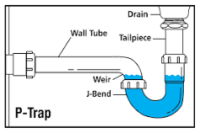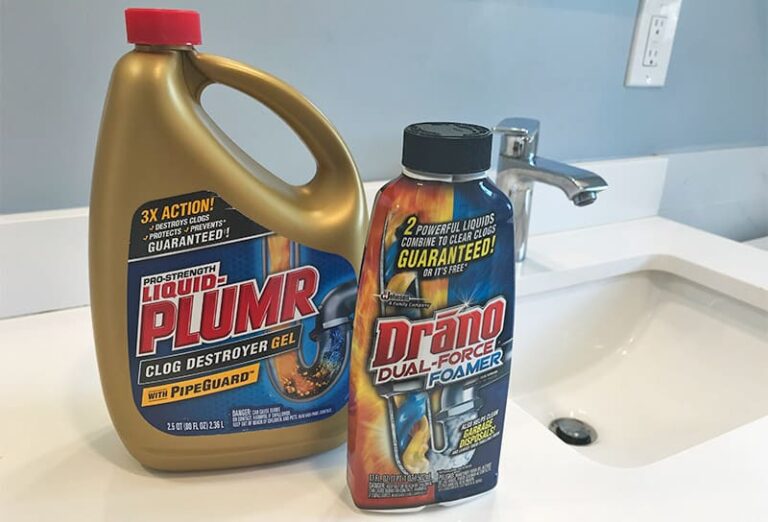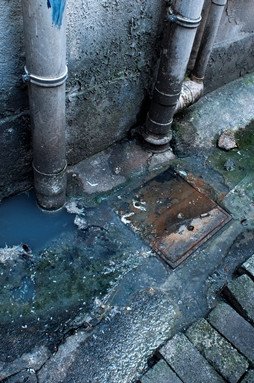What Are The Types Of Drains?
Drainage is an essential part of any plumbing system. There are several different types of drains that can be used depending on the specific needs of a particular space. Some common types of drains include floor drains, sink drains, toilet drains, and shower drains. Each type of drain is designed to serve a specific purpose and have different installation requirements. This article will provide an overview of the different types of drains and their uses.
Overview of Different Types of Drains
Drains are an essential part of any home or commercial property – providing a way for wastewater and other liquids to safely be removed. There are several types of drains used in different applications, and understanding the differences between them is key to ensuring they are installed correctly. Here’s an overview of the most common types of drains: Floor Drains – located in basements, utility rooms, and bathrooms, these drains collect water from the floor and transfer it to the waste line. Shower Drains – these are installed in showers and tubs, and have a flat or curved grate that allows water to flow through. Sink Drains – installed in sinks, these drains collect the water and direct it to the waste line. Roof Drains – these are designed to direct water away from the roof and into the drainage system. Downspout Drains – these are often used to collect water from gutters and direct it away from the building’s foundation. With a better understanding of the different types of drains, you can make sure that your home or commercial property is properly equipped to handle water removal.
Main Types of Drains
When it comes to plumbing, the main types of drains are essential for keeping your home safe and sanitary. These include floor drains, roof drains, sink drains, shower drains, and toilet drains. Floor drains are typically found in basements and crawl spaces, and are designed to catch excess water and direct it away from the foundation. Roof drains are essential for diverting rainwater from the roof and preventing water leakage. Sink drains are installed beneath sinks to collect and funnel wastewater away from the house. Shower drains are designed to collect and carry away the wastewater generated when you take a shower. Finally, toilet drains are responsible for removing wastewater from the toilet. Each type of drain plays an important role in the functioning of your plumbing system.
Advantages of Installing Drains
Installing drains can be a great way to ensure the safety and well-being of your property. Drains are a critical part of your home’s plumbing system, helping to prevent flooding and other water damage to your home. They also keep your yard and driveway from becoming muddy and slippery. With the installation of drains, you can protect your home from water damage, reduce the risk of foundation problems, and keep your property looking neat and tidy. Additionally, drains can help with drainage during heavy rain, helping to keep your lawn and landscape from flooding. Installing drains can also help to improve the aesthetic look of your property, helping to create a pleasant, organized atmosphere. Lastly, installing drains can help to reduce the amount of maintenance you have to do on your property, making it easier and more efficient to manage.

Disadvantages of Installing Drains
Installing drains can be a messy and difficult process, and there are some disadvantages to consider before taking on the task. Firstly, the cost of installation and maintenance can be expensive, as the materials used to create drains are not always cheap. Secondly, the installation process can be time-consuming and require a lot of manual labour. Thirdly, there is a risk of breaking existing pipes and causing damage to the surrounding area during the installation process. Lastly, drains can become blocked and cause water to back up, leading to flooding and other potential hazards. Thus, it is important to weigh all the pros and cons before installing drains.
Considerations When Installing Drains
When installing drains, there are several important considerations to keep in mind. Firstly, it is important to consider the size and type of drain needed for the particular application. Secondly, the drainage system must be designed to ensure water is directed away from the building, to prevent water damage. Additionally, the system must be installed correctly to ensure it meets public health and safety regulations. Furthermore, the system should be designed with a slope to avoid standing water and to ensure that the water will flow properly. Finally, it is important to consider the material of the drainage system, as this will determine its durability and effectiveness. With careful consideration, installing drains can be a relatively straightforward process.
Maintenance Tips for Drains
When it comes to drain maintenance, prevention is always better than cure. Taking the time to inspect and clean your drains regularly will help prevent clogs and other issues that can lead to expensive repairs. A few simple tips can help you keep your drains in top condition. First, never pour grease or oil down your drains, as they can solidify and cause blockages. Second, use a strainer to catch food particles and other debris before they enter the drain. Third, periodically flush your drains with boiling water to help clear any potential buildup. Finally, if you suspect a clog, don’t reach for the chemical drain cleaners as they can be corrosive and damaging to your pipes. Instead, use a plunger or an auger to break up the clog. Taking these simple steps will help ensure that your drains stay in good working order for years to come.
FAQs About the What Are The Types Of Drains?
1. What are the differences between the different types of drains?
Answer: The four main types of drains are: floor drains, trench drains, catch basins, and roof drains. Floor drains are typically found in basements, garages, and other low-lying areas and are designed to collect and direct water away from the structure. Trench drains are typically installed in driveways, walkways, and other places where surface drainage is needed. Catch basins are designed to collect water runoff from large areas, such as parking lots and roadways, and direct it into a storm sewer system. Roof drains are used to collect and direct rainwater away from roofs.
2. What kind of drain should I install in my home?
Answer: The type of drain you should install in your home will depend on the specific needs of your home. Floor drains are typically the best choice for basements and other low-lying areas, while roof drains are usually the best choice for directing rainwater away from roofs. For areas where surface drainage is needed, such as driveways, walkways, and parking lots, trench drains are usually the best choice.
3. What materials are used for drains?
Answer: The materials used for drains vary depending on the type of drain and the application. Floor drains are typically made from cast iron or plastic. Trench drains are usually made from concrete, PVC, or metal. Catch basins are typically made from concrete or plastic. Roof drains are made from copper, aluminum, or PVC.
Conclusion
In conclusion, there are several types of drains that can be used in a variety of applications. These include floor drains, roof drains, catch basins, trench drains, French drains, and many more. Each type of drain has its own advantages and disadvantages, so it is important to choose the right drain for the job. It is also important to consider local codes and regulations when installing any type of drain. With careful consideration, the right drain can be chosen for the job and provide years of reliable service.







